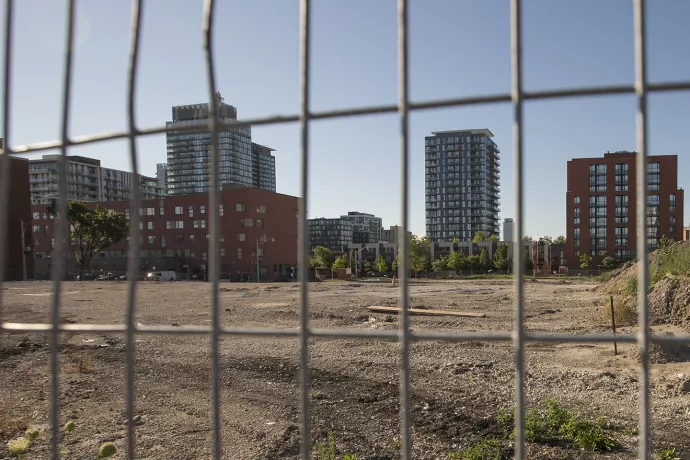Regent Park redevelopment reinforces need for public housing funding, study shows

The Regent Park redevelopment in Toronto has won praise for taking a neglected downtown housing project and turning it into a successful mixed-income neighbourhood with impressive public amenities.
But the ongoing $1.5 billion redevelopment has also disrupted lives, suffered major financial and political difficulties, and now faces mixed reviews from the very residents it was designed to help.
“There continues to be contention around whether or not this redevelopment was better or worse for the community,” says Shauna Brail, an associate professor and the director of the Institute for Management & Innovation at the U of T Mississauga.
“I am on the side that says that Regent Park today is an improved neighbourhood beyond what it was in 1999, or in 2006,” she says. But the huge project has navigated a host of problems since it was first proposed, and she agrees it hasn’t done everything it set out to do.
Brail is an economic geographer and urban planner interested in how economic, social and cultural change transforms cities. She’s been studying the Regent Park redevelopment since the project broke ground in 2006.
Along with Toronto journalist John Lorinc she recently published an examination of the project in the Journal of Planning Education and Research.
Regent Park was originally built as public housing in the 1940s and ‘50s, with 2,083 subsidized units on 69 acres. By the 1990s the housing was in poor repair, and the neighourhood was experiencing problems with crime and stigma. At the same time, the federal government had decreased the funding available for social housing.
Land values, though, had gone up. The Toronto Community Housing Corp. (TCHC) decided to pay for redevelopment through “financialization” – building and selling some housing at market prices, and using the profits to finance new subsidized housing.
The vision was to create a mixed-income neighbourhood with a strong sense of community and amenities shared by everyone. Existing tenants were relocated during reconstruction, but were offered a right to return, and so far about half have come back.
One of the things Brail was interested in was how low-income community residents would be able to influence the redevelopment process. She says they empowered themselves, giving input on planning and insisting that money and resources be dedicated to the community for things like parks, social centres, jobs and training.
But the community is also divided on the outcomes so far.
“There are some who say, without a doubt, this is better,” Brail says. “On the other side is the narrative of destruction of community, the sense that this is a very patronizing kind of approach to redeveloping public housing.”
Brail and Lorinc’s paper outlines the political, financial and social complications of the project over 20 years, which has been delayed by a number of factors, including the election of mayor Rob Ford, who was skeptical of the project. Redevelopment is now 5 to 8 years behind schedule, with two of five phases unfinished.
Brail says she’s interested in how the rising value of downtown real estate changed how planners thought about public housing. Rather than needing to be paid for by the public, projects could finance themselves. Financialization, however, didn’t cover all the cost for Regent Park’s redevelopment. The three levels of government have ended up kicking in about $500 million so far.
One of the major lessons of the project is that redevelopment doesn’t come free.
“The financialized model on its own is not sufficient. Governments still need to continue to think through just how to fund public housing, and they need to continue to be pushed to do that,” Brail says.



